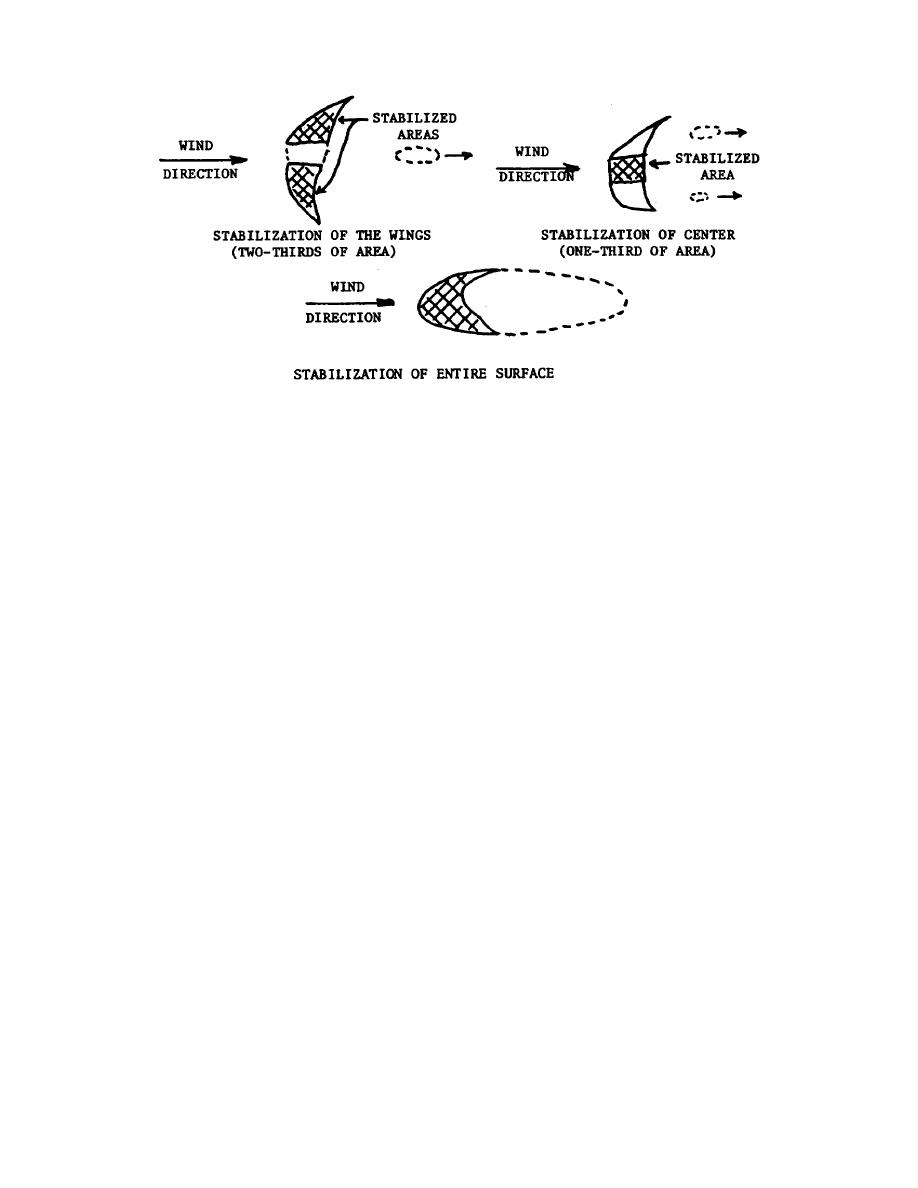
TM 5-830-3/AFM 88-17, Chap. 3
Figure B-6. Schematic of dune destruction or stabilization by selective treatment
advantages of permanence and environmental
treatment. Water is required for establishing vegetative
enhancement wherever water can be provided for
covers. The need for frequent reapplication and an
growth.
adequate and convenient source constitute two major
disadvantages of this method.
B-10.
Mechanical removal
B-13.
Blanket covers
In small areas, sand may be removed by heavy
equipment, but conveyor belts and power-driven wind
Any material that forms a (semi) permanent cover and is
machines are not recommended because of their
immovable by the wind will serve to control dust. Solid
complexity and expense. Mechanical removal may be
covers, though expensive, are excellent protection and
employed only after some other method has been used
can be used over small areas. This method of sand
to prevent the accumulation of more deposits. Except
control accommodates pedestrian traffic as well as a
for its use in conjunction with another method of control,
minimum amount of vehicular traffic. Blanket covers
the mechanical removal of sand is not practical or
may be made from bituminous or concrete pavements,
economical.
prefabricated landing mat, membrane, aggregate,
seashells, and saltwater solutions. After placement of
any of the above listed materials, a spray application of
B-1 1. Trenching
bituminous material may be required to prevent blanket
decomposition and subsequent dust.
A trench may be cut either transversely or longitudinally
across a dune to destroy its symmetry. If the trench is
B-14.
Salt solutions
maintained, the dune will be destroyed by wastage. This
method has been used successfully in the (Yuma
Desert) Arizona highway program, but it is expensive and
Water saturated with sodium chloride or other salts can
requires constant inspection and maintenance.
be applied to sand dunes to control dust. Rainfall will
leach salts from the soil in time. During periods of no
rainfall and low humidity (below approximately 30
B-12.
Water
percent) artificial moisture in the form of water may have
to be added to the treated area at a rate of 0.10-0.20
Water may be applied to sand surfaces to prevent sand
gallons per square yard to activate the salt solution.
movement. It is widely used and excellent temporary
B-6



 Previous Page
Previous Page
